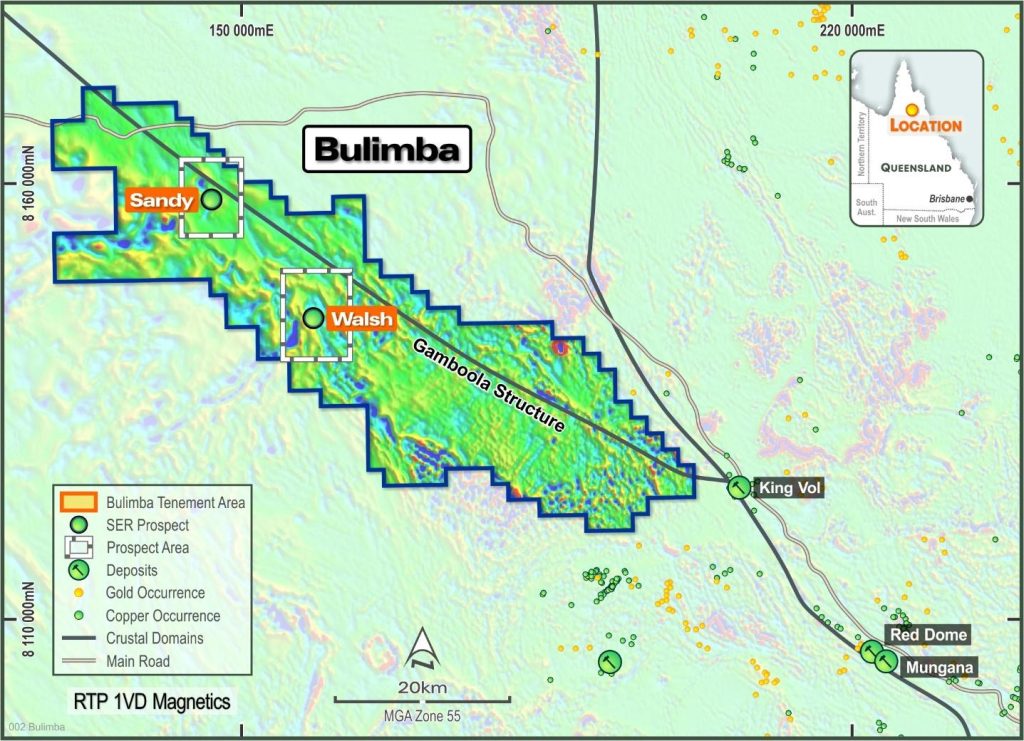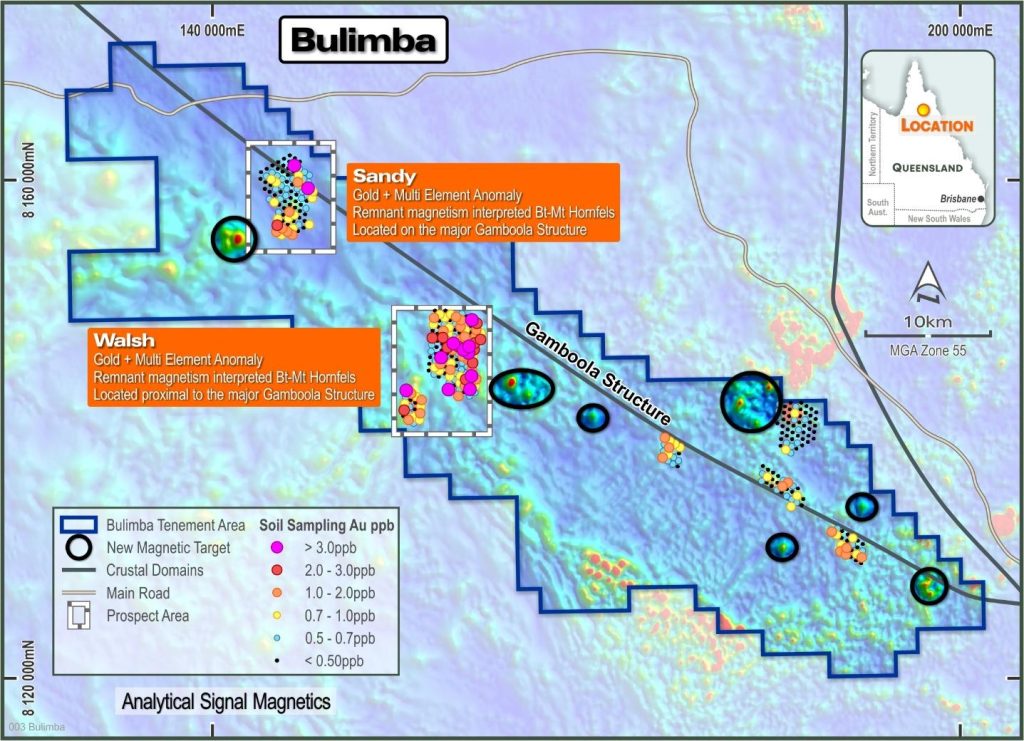BULIMBA Au Project
The Bulimba Project comprises four exploration licences EPM28877-EPM28880 (1,315km2) located in NE Queensland, designed to capture the significantly underexplored extension of the fertile Palmerville Fault – Gamboola Fault Zone that is highly prospective for intrusion-related gold systems (IRGS).
The Gamboola structural trend is interpreted to have a strong spatial control on emplacement of multiple phases of igneous activity, including the Late-Permian to Mid-Carboniferous Kennedy Igneous Province. Magmatism during this stage resulted in widespread intrusion of granitic rocks, extrusion of felsic volcanic rocks, and the localised emplacement of high‐level rhyolitic porphyry stocks. In the Chillagoe region, rocks of this association are genetically related to the Red Dome and Mungana gold-copper deposits to the SE of the project area (Figure 1).
The key prospectivity indicators identified at the Bulimba Project include the presence of a major mineralising fault(s), association with Kennedy Province intrusive suite, hydrothermal alteration and geochemical anomalism over concealed targets. The project area has very little previous exploration due to the presence of younger sedimentary cover, with the entire belt considered to be highly prospective for IRGS.

Previous Exploration
Previous exploration at Bulimba for IRGS was conducted by Newcrest Mining and later Tartana Resources Limited (2017-2023). During this period, an airborne magnetic and radiometric survey was conducted, stream sediment and a soil sampling program completed followed by a Falcon Airborne Gravity Gradiometry (AGG) survey covering the western part of the project. Numerous interpreted intrusives with associated geochemical anomalies were identified as areas of interest which were never followed up which will be the focus of future exploration.
Geochemistry
The existing geochemical datasets over the project were collected in 2018. Remanent magnetic features coincident with interpreted areas of sub crop or shallow cover were targeted which were identified from the assessment of radiometric data. An initial survey of stream sediments and BLEG (bulk leach extractable gold) samples was undertaken followed by gridded surface soil programs at multiple prospects. Results for the 590 soil samples at 400m spacing identified zones of elevated coincident Au-Cu-Zn-Mo-As at the Sandy and Walsh Prospects which are interpreted as coherent multi-element anomalies consistent with intrusion-related gold-copper systems within Northeast Queensland which include Kidston, Mt Leyshon and Mungana (Figure 2).

The Sandy Prospect is a 6km by 3km feature located on the NW striking Gamboola fault structure, with distinctive remanent magnetism (presents as a distinct magnetic low), interpreted to be associated with biotite-magnetite hornfels alteration associated with a volcanic porphyry. The soil geochemistry returned zones of multi-element anomalism at the edges of the remanent magnetism with a peak Au in soil value of 3.8ppb Au.
The Walsh Prospect is a reversely magnetised, ovoid anomaly equivalent in scale to Kidston, Mt Leyshon and the Red Dome-Mungana anomalies. The Prospect is located in an area of structural complexity at the intersection of fertile NW-trending faults and major cross-cutting NE fault corridor and represents a high priority target with a peak Au in soil value of 14ppb Au.
The soil geochemistry results are highly encouraging given the potential subdued response due to sedimentary cover, providing confidence that further systematic geochemical programs across the Bulimba Project are warranted. These prospects and other zones of anomalism identified in the existing geochemical dataset as well as previous untested remanent features are high priority targets for the first phase of exploration.

